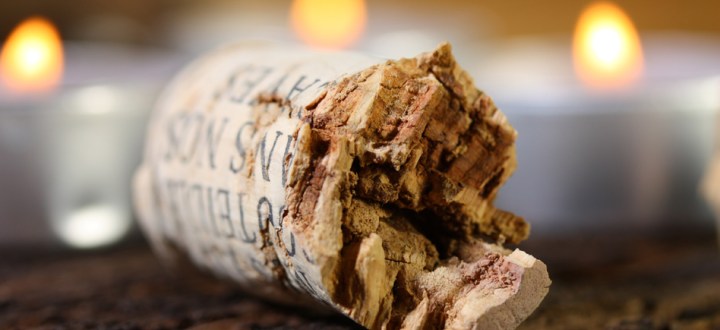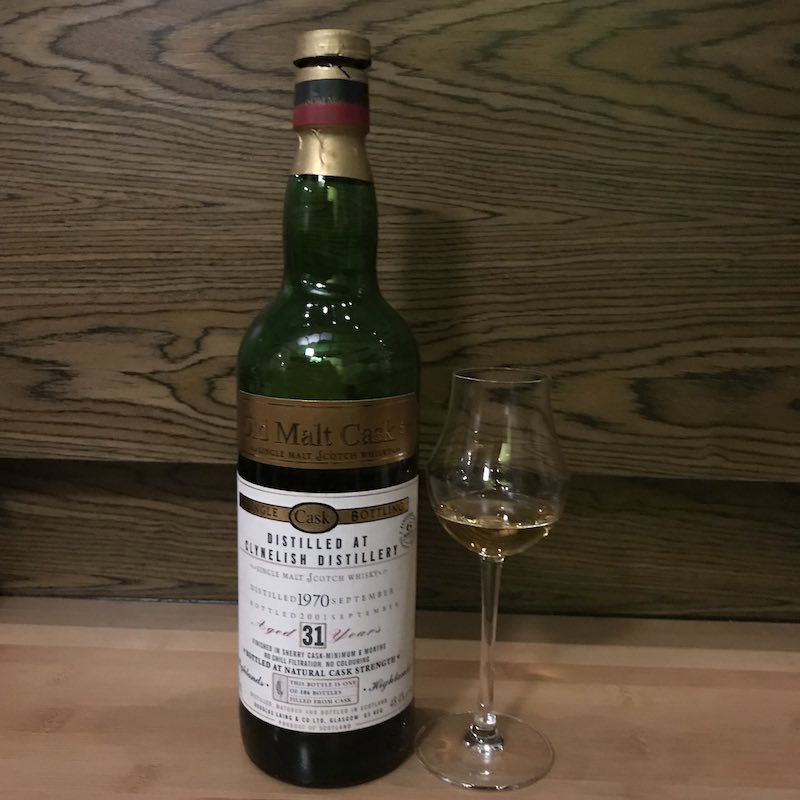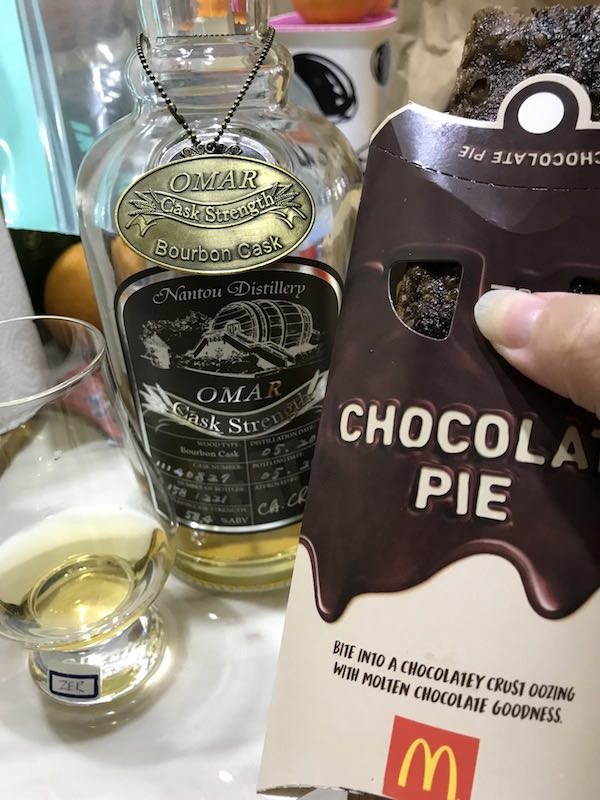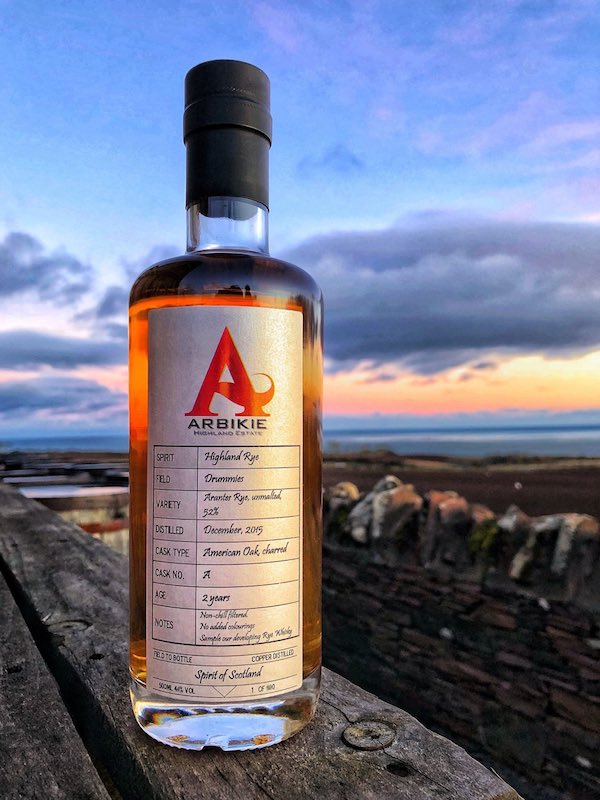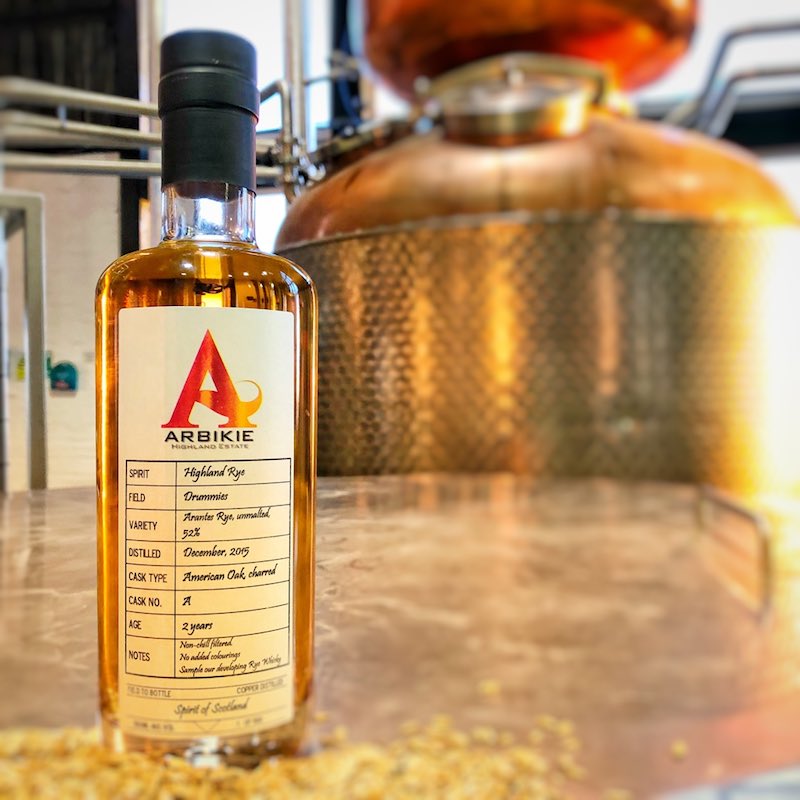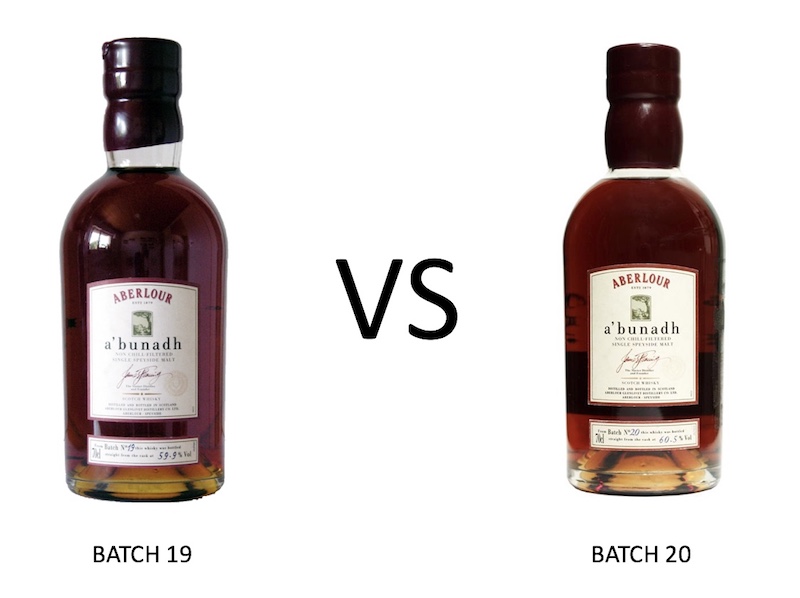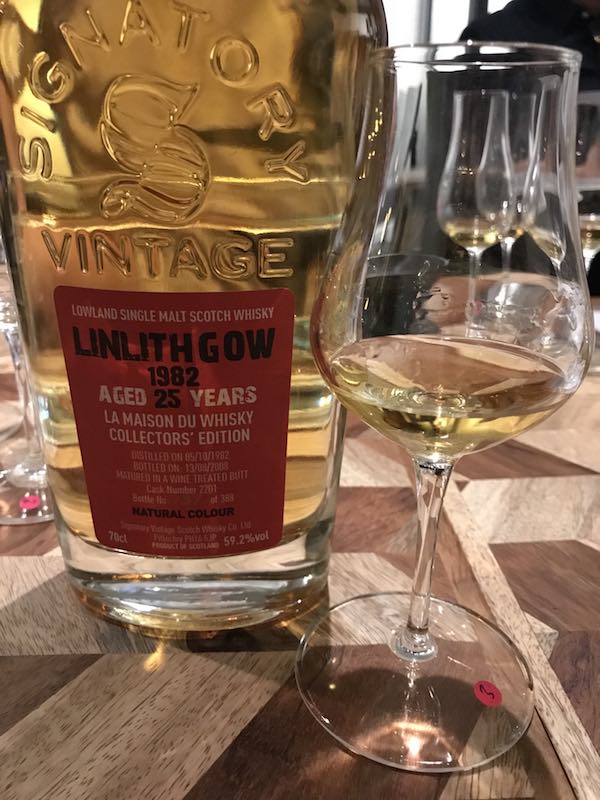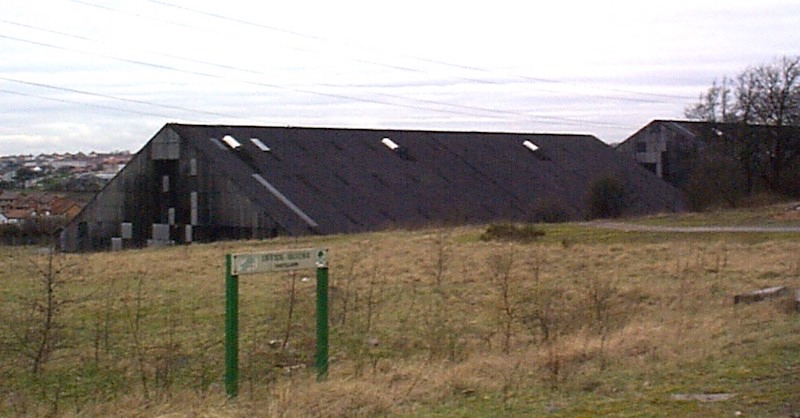
The new Reception at Pernod Ricard Singapore
Geek Flora and Geek Choc visited Pernod Ricard Singapore recently for a drink with their Assistant Brand Community Manager, Denis English. It was our first time to the office bar, and we were excited to find out how it looks like. When we reached the office lobby, we found Denis patiently waiting for us outside the office! That was a great welcome!
The Walk to the Bar
Denis walked us into the office, and the first thing that greeted us was the magnificent reception that you see at the top of this post. We understand that Pernod Ricard renovated the office and they have just recently reopened the bar as well. At one corner of the large reception area, there is a sofa with some splendid posters. This is the waiting area.

Pernod Ricard’s Waiting Area

Check out the posters. They are gorgeous!
We turned into a corridor where there is a wall filled with their products. There is a selection of fine wines, cognac, whiskies, gins, vodka, tequila and rum. Here’s a picture to show you how the wall looks like.
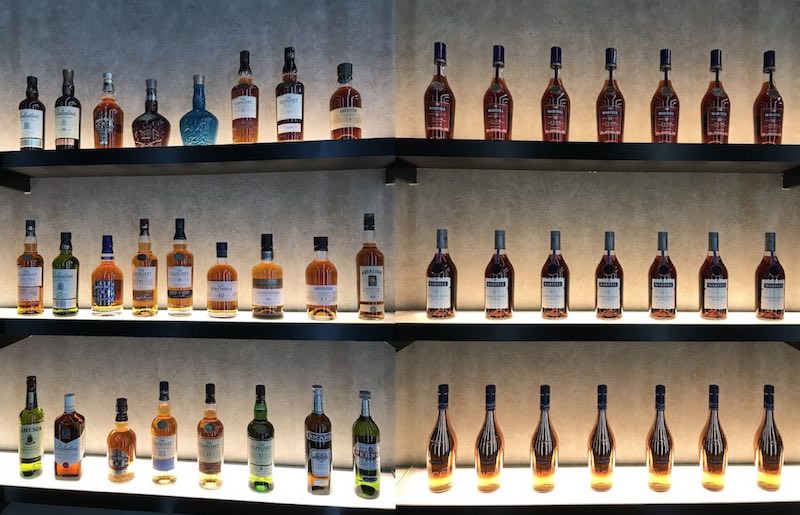
The Whisky_Cognac Wall
Pernod Ricard’s Office Bar
This beautiful corridor leads to a vast, open space that house the Pernod Ricard’s office bar. This is how it looks.

Denis behind the bar counter
Pernod Ricard uses the bar for training within the company and industry. Denis shared that the company trains bartenders, bar owners, bar managers and their trade partners in the bar. Of course, employees have access to the bar and they can “drop-by” after work for a drink or two.
Besides the bar counter, there is an open area that can hold up to say about 30 people by our judgement.

Appealing Open Area in the bar
The office bar is a good place for employees to relax after a hard day’s work with some whiskies, cognac or gin. The bar is well-stocked, and there are various delicious blended and single malts that we spy from our seats at the counter. We spent a long time here to understand more about the whisky range of Pernod Ricard and of course, chatting about whiskies!
The Tasting Session
Denis filled the evening with lovely whiskies and his generosity as we sample drinks after drinks. We started with two special bottlings of the Chivas Regal – the Extra and the Mizunara. We then moved on to the Royal Salute 21 Years, Ballantine’s and the single malts.
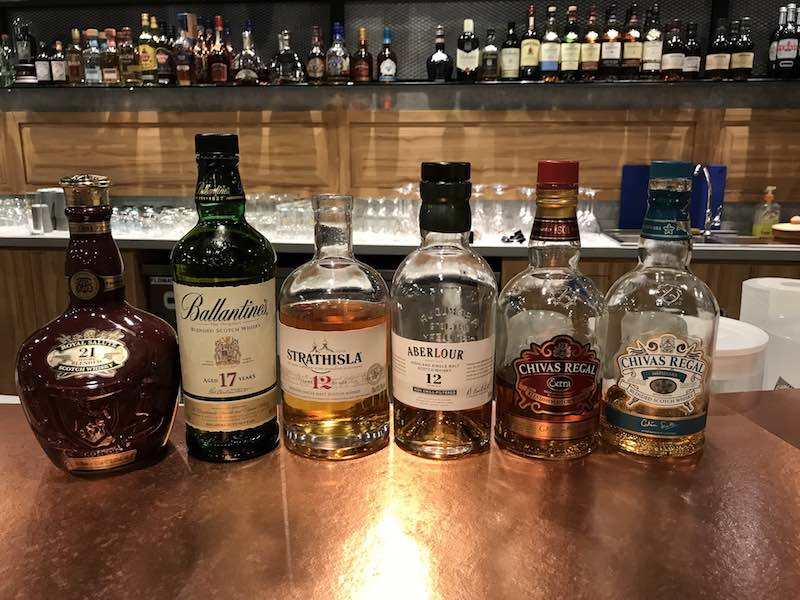
The range of whiskies we tasted
The Chivas Range
Those of you who know me (Geek Flora) personally will know that I am not a huge fan of the Mizunara cask as I am not fond of incense in my whisky. The Chivas Regal Mizunara is of course, not something I am so keen to try. It is finished in Mizunara casks for three to six months, so I am wary of the incense notes when I nose it. Interestedly, the incense here is fragrant and well, not so intense! I get the vanilla more than the incense. You could say that it is a welcoming change, but it is still not as outstanding as the Chivas Regal Extra.
Now, the Chivas Regal Extra is made up of mostly sherry-cask whiskies. That shows up quickly in the nose and palate where sherry notes and caramel fight for the limelight. Although it is a 40% blended whisky, it holds up to the test when we leave the whisky in the glass to air. After about 45 minutes of airing in a Glencairn glass, the whisky opens up beautifully with deep sherry notes, caramel, hints of vanilla and gentle spice. It does not taste like a 40% anymore. It is fantastic! What is even better is the fact that the whisky costs only SGD$85. Perfect for a party, don’t you think so?
The Royal Salute 21 Years is a famous expression that many whisky drinkers enjoy. It is easy to drink and looks royal sitting in those ceramic decanters. We had more than just a sip of the Royal Salute 21 years and enjoyed the oily, sweet palate as the whisky slid gently down the throat.
The Ballantine’s 17 Years Old
We want to highlight the Ballantine’s 17 Years Old here because it is not a popular brand in Singapore. It is well-loved in Taiwan, and our Taiwanese friends love the brand. We requested to have a taste of it, and Denis generously opened a new bottle just for us to try.
Ballantine’s is spicier than the Chivas, which makes us think that the blend is likely to contain more whiskies aged in ex-bourbon casks. There is also a possibility of having some rye in it. The flavours are also more prominent. Slightly grassy, with green fruits such as apples, pears and even some grapes in it. Even the finish is longer than the Chivas, with dry sweetness leading all the way till the end.
The Single Malts
Pernod Ricard carries many single malts that go into their blends. Some of the single malts include The Glenlivet, Aberlour, Strathisla, Allt-a-Bhainne and Braeval. Glen Keith, Longmorn, Glenburgie and Glentauchers are also part of their portfolio. With so many single malts under their belt, Pernod Ricard’s position as the second largest company of wine and spirit in the world is not at all surprising.
We tried the Aberlour 12 and the Stathisla 12. Interestedly, we had tried whiskies from both distilleries before, but never an official bottling. It was a perfect chance for us to try them out indeed!
The Aberlour 12 is delicious with plenty of sherry and caramel notes. What is unique about this expression is the grape notes that I picked up on the palate, almost like red wine. We found out later that this expression is not the usual 12 years old, but one of the limited editions. Talk about it being a special one!
The Strathisla 12 has more bourbon influence, and the oak is stronger too. Perhaps the distillate is lighter and takes in more influence from the cask. Nonetheless, it was a lovely dram that speaks of creamy vanilla, mild oak and a little spice.
A Tour around the Office
After some drams, Denis invited us for a tour around the office. They have themed meeting rooms which impressed us very much with the beautiful decorations and practical use of the various items within the rooms. They have a Perrier Jouet room, a Chivas Room, a Monkey 47 Room, a Jameson Room and a secret Martell Room! Outside the rooms, there is also an open area where employees can discuss matters over a cup of coffee or a game played in a sandpit!

Open Area and Sandpit

Perrier Jouet Room

Monkey 47 Gin Room
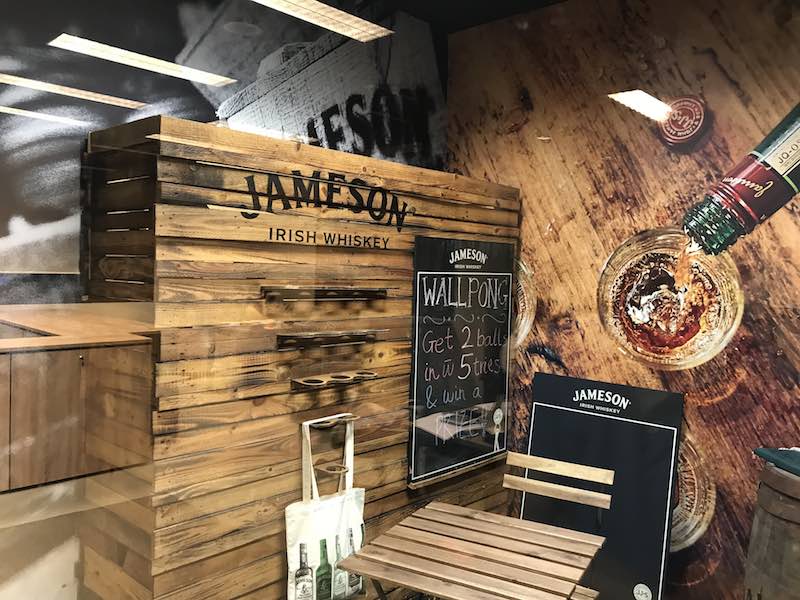
Jameson Room
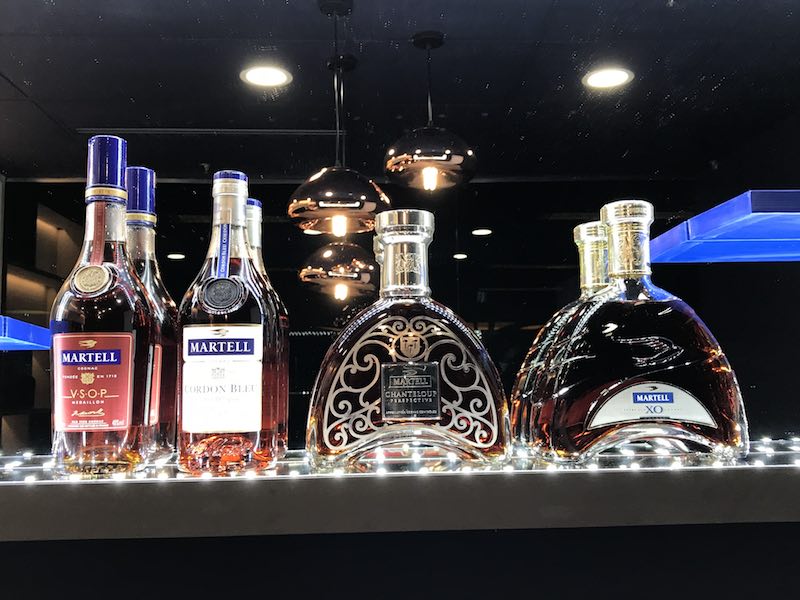
Display at the Martell Secret Room
It was a pity that I failed to take a full picture of the secret Martell room, but well, it was a thrill to find it! Haha!
The Last Drop before Leaving
As we headed back to the bar to pick up our things, Denis found an open bottle of the Chivas Royal Salute – The Polo Collection. As it is a special edition, Denis invited us to sit down again for a taste of it. It is different from the usual Royal Salute. The Polo Collection has a spicy tinge to it and opens up a delicate, floral flavour. The nose is perfumey and gentle, almost like a soft touch from a rose petal.
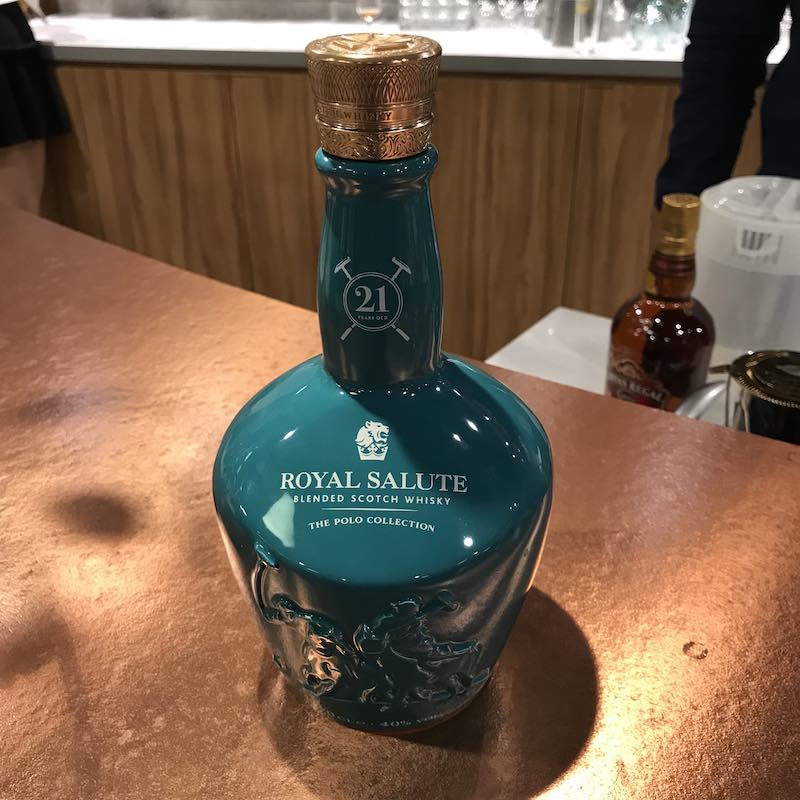
Royal Salute Polo Collection
It was time to say goodbye after the last drop as the night was deepening. We bid good night to Denis and thank him for the wonderful evening. We look forward to seeing Denis again and hope to work with him in future!
As for you, our dear readers, we hope to bring you some superb deals from Pernod Ricard too!
Like what you have just read?

